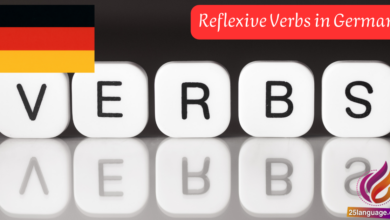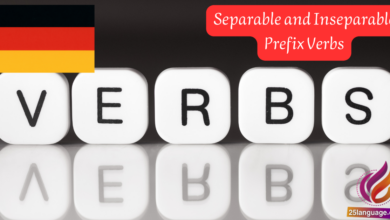Difference Between doch, mal, and ja in German

Unlocking the subtleties of the German language can feel like a treasure hunt, especially when it comes to seemingly simple words like “doch,” “mal,” adn “ja.” Each of these expressions adds unique flavor to conversations and can change the tone or meaning of your sentences entirely. In today’s lesson, we’ll explore how to use these words effectively, enriching your German skills and helping you sound more natural in everyday dialog. Let’s dive in!
Exploring the nuances of Doch, Mal, and Ja in German Communication
In German, the word doch serves multiple functions in conversation, often used to contradict a previous statement or to add emphasis.For instance, when someone expresses doubt or disagreement, replying with “Doch!” affirms the opposite. This can be seen in the exchange: „du hast keine Zeit für den Film.“ – „Doch, ich habe Zeit!“ (Translation: “You don’t have time for the movie.” – “Yes, I do have time!”). additionally, doch can soften the impact of a statement by providing a different outlook, as in: „Das Wetter ist nicht so schlimm, doch es wird kälter.“ (Translation: “The weather isn’t that bad, but it will get colder.”).
The term mal is often used to indicate a casual or informal nature in requests or suggestions, making them sound less demanding. This is commonly found in commands to soften their tone, as in: „Komm mal hier!“ (Translation: “Come here for a second!”). Moreover, ja is used to convey assurance or even impatience in conversation; it acts as a confirmation that something is clear or acknowledged. For example: „Das weißt du ja.“ (Translation: “You no that, of course.”). Understanding these nuances helps learners navigate everyday German conversations more effectively.
| German Example | Function/Rule | English Translation |
|---|---|---|
| „Doch, ich habe Zeit!“ | Contradiction or affirmation | “yes, I do have time!” |
| „Das Wetter ist nicht so schlimm, doch es wird kälter.“ | Softening impact of statement | “The weather isn’t that bad, but it will get colder.” |
| „Komm mal hier!“ | Informal request | “Come here for a second!” |
| „Das weißt du ja.“ | Confirmation or acknowledgment | “You know that, of course.” |
Mastering the subtlety: How Doch, Mal, and Ja Shape conversations
In German conversations, subtle nuances determine the meaning and tone, especially when using words like doch, mal, and ja. These words are frequently enough used to convey emphasis, contradiction, or familiarity. Understanding their usage can substantially alter the message being communicated. For example, doch is particularly useful for contradicting a negative statement. Consider the exchange: “Du hast keinen Hunger.” (You’re not hungry.) The response “Doch,ich habe Hunger.” (Actually, I am hungry.) corrects the misconception with a contrasting tone. Similarly, mal adds a sense of light-heartedness or urgency. If someone says, “Komm mal her!” (Come here!), it implies a kind request instead of a stern command.
Another important element is ja, which serves to emphasize a point or express agreement. It can soften statements or signal certainty. For instance, when someone asserts, “Das Wetter ist schön, ja?” (The weather is nice, isn’t it?), the ja invites confirmation and makes the speaker seem more approachable. Here’s a summary in the table below that highlights the rules and examples for these three words:
| German Word | Function | Example | English Translation |
|---|---|---|---|
| doch | Contradiction | “Du hast keinen Hunger.” | “Doch, ich habe Hunger.” (actually, I am hungry.) |
| mal | Casual Request | “Komm mal her!” | (Come here!) |
| ja | Emphasis/Agreement | “Das Wetter ist schön, ja?” | “The weather is nice, isn’t it?” |
Understanding the Context: Practical Uses for Doch, Mal, and Ja
In German, the word doch is a versatile particle that can be used in various contexts to convey contradiction or affirmation. It is often used in response to a negative statement to emphasize that the opposite is true. For example, if someone says “Das ist nicht wahr.” (That is not true), one might respond with “Doch, das ist wahr!” (Yes, that’s true!).This highlights the speaker’s disagreement with the initial statement. Additionally, doch can also soften commands or requests, making them sound less abrupt. As an example: “Komm doch mit!” (Do come along!) is more inviting than simply saying, “Komm mit!” (Come along!).
The word mal adds a casual tone or implied suggestion, often softening requests or commands.It is commonly used in spoken German to make sentences sound friendlier or more informal. For instance,if someone wishes to ask a friend to listen: “Hör mal!” (Listen!),it’s less forceful and more about inviting attention. ja serves multiple purposes; it can be used to express agreement or to affirm something emphatically.In a conversation, if someone says, “Du kommst zur Party, oder?“ (You are coming to the party, right?), a simple “Ja, ich komme!” (Yes, I am coming!) confirms the statement and conveys enthusiasm.
| German Example | Rule/Usage | English Translation |
|---|---|---|
| Das ist nicht wahr. - doch, das ist wahr! | Used to contradict a negative statement | That is not true. – Yes, that is true! |
| Komm doch mit! | Softening commands, making them more inviting | Do come along! |
| Hör mal! | Making requests more casual and friendly | Listen! |
| Ja, ich komme! | Expressing agreement or affirmation | Yes, I am coming! |
Enhancing Your German: Effective Strategies for Using Doch, Mal, and Ja
In German, the word doch is often used to contradict a negative statement or assumption made by someone. It serves to emphasize the opposite of what has been expressed. for example, if someone says “Du magst keinen Kaffee” (You don’t like coffee), you could respond with “Doch, ich mag Kaffee!” (On the contrary, I do like coffee!). It’s critically important to note that doch adds a tone of reassurance or disputation,reinforcing your point against the previous claim. Here are a few key uses of doch:
- To contradict a negative assumption.
- To express surprise or emphasis.
- To affirm a positive statement despite a preceding negative context.
The word mal is an informal particle that adds a softer tone to requests or suggestions, making them sound more casual and friendly. As a notable example, if you say “Komm mal her!” (Come here for a moment!), it sounds more inviting and less demanding than just “Komm hier!” Additionally, mal can be used to indicate a brief action or a one-time suggestion. Here are some scenarios for it’s usage:
- To make invitations more relaxed: “Lass uns mal essen gehen” (Let’s go have a meal sometime).
- to indicate a singular occasion: ”Schau dir das mal an!” (Take a look at this!).
- To express urgency casually: “Mach mal schneller!” (Do it a bit faster!).
| german Example | rule/Usage | English Translation |
|---|---|---|
| Ich mag das nicht. | Negative statement | I don’t like that. |
| Doch, das ist gut! | Contradiction | On the contrary, that’s good! |
| Mach mal eine Pause. | Casual request | Take a break for a moment. |
| Lass uns mal shoppen gehen. | Softer suggestion | Let’s go shopping sometime. |
Insights and Conclusions
Conclusion: Mastering “Doch,” “Mal,” and “Ja” in German
Congratulations on completing today’s lesson on the nuanced differences between the German expressions “doch,” ”mal,” and “ja”! you have explored how these small but powerful words can change the tone and meaning of a conversation in meaningful ways.
To summarize, “doch” serves as a useful tool for contradiction, helping you assert a point or clarify a misunderstanding, adding emphasis where needed. “Mal,” on the other hand, softens requests and suggestions, making your speech sound more friendly and approachable. Lastly, “ja” not only signifies agreement but also adds a layer of affirmation to reinforce your statements.
Now that you’ve grasped these concepts, we encourage you to practice incorporating these expressions into your everyday conversations. Try using them with friends,language partners,or even in writing to get comfortable with their meanings and contexts. Remember, mastering a language is a journey—every little step you take brings you closer to fluency. Don’t hesitate to revisit this lesson whenever you need a refresher!
Keep up the great work, and let the excitement of learning fuel your progress! Happy speaking!





























